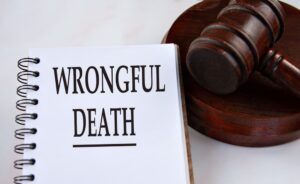Losing a loved one due to the negligence or misconduct of another is an unimaginable tragedy. In such difficult times, it is essential to understand how liability is determined in a wrongful death case. When pursuing legal action, it is necessary to establish that the actions of another party caused the death and that this party was legally responsible for their actions.
It can involve gathering evidence, such as medical records, eyewitness testimonies, and expert opinions, to prove negligence or intentional wrongdoing. It is essential to consult with an experienced wrongful death attorney who are skilled in cases involving wrongful death. They can guide you through this complex legal process and fight for justice on your behalf.
If you have lost a loved one under such circumstances, do not hesitate to contact a knowledgeable wrongful death attorney near you to discuss your case. Wrongful death lawyers are compensated by contingency agreement, so you don’t pay legal fees unless they win your case.
SCHEDULE FOR A FREE CASE EVALUATION

A wrongful death claim is a legal action that arises when someone dies due to the negligence or intentional actions of another person or entity. It can include situations such as car accidents, medical malpractice, workplace accidents, or even acts of violence. In a wrongful death claim, the surviving family members or beneficiaries of the deceased can seek compensation for their damages, including medical expenses, funeral costs, lost income, and pain and suffering.
To pursue a wrongful death claim, it is necessary to establish four elements:
According to the National Safety Council, approximately 150,000 wrongful death claims were filed in the United States in 2018, marking a 45 percent increase from 2009. It translates to about 400 families affected daily by preventable deaths.

The leading causes include motor vehicle accidents, accounting for 47 percent of claims, followed by medical malpractice at 17 percent and workplace injuries at 12 percent. States like California and Texas report higher incidences, with 16 percent and 14 percent of nationwide claims, respectively, in 2018. It reflects their large populations and high levels of traffic or industrial activity.
Motor vehicle accidents are a significant driver of wrongful death claims, with the National Highway Traffic Safety Administration reporting 42,915 traffic fatalities in 2021, a notable rise from 2020. The Centers for Disease Control and Prevention (CDC) notes that motor vehicle crashes caused around 33,000 deaths annually in recent years, with 31 percent of these linked to drunk driving.
Medical malpractice is another major contributor, often cited as the third-leading cause of death in the U.S. A Johns Hopkins study estimated 250,000 annual deaths due to medical errors. However, some analyses suggest figures as high as 440,000. However, these numbers are debated due to methodological issues, with a 2020 Yale study proposing a lower estimate of 22,000 preventable deaths, primarily among patients with short life expectancies.

Workplace and other unintentional injuries also contribute significantly. The Occupational Safety and Health Administration reported 4,379 workplace deaths in a fatal accident census, with 21.4 percent occurring on construction sites. Falls, a leading cause, accounted for 32,000 deaths, per the National Safety Council, with 55 percent of unintentional injury deaths among adults over 65 attributed to falls, often in nursing homes.
Unintentional poisoning, particularly from overdoses, led to 38,851 deaths in about a decade ago, surpassing motor vehicle deaths. These diverse causes, ranging from slips and falls to defective products, illustrate the broad scope of wrongful death claims, emphasizing the need for robust safety measures and legal recourse for affected families.
A wrongful death claim may be filed when another person’s negligence, action, or inaction contributed to your loved one’s death. Common reasons that wrongful death claims are filed include:

Medical malpractice is a leading cause of wrongful death claims. This occurs when a healthcare professional, such as a doctor, nurse, or surgeon, fails to provide the standard of care expected in their field, resulting in a patient’s death. Examples include misdiagnosis, surgical errors, medication mistakes, or failure to treat a serious condition.
Motor vehicle accidents, including those involving cars, trucks, motorcycles, or pedestrians, are a significant source of wrongful death claims. These accidents are often caused by negligent behaviors such as distracted driving, speeding, drunk driving, or failure to obey traffic laws. For example, a truck driver who runs a red light and collides with a car, killing its occupant, may be held liable for wrongful death.
Workplace accidents can lead to wrongful death claims, particularly in high-risk industries like construction, manufacturing, or mining. These incidents may result from unsafe working conditions, inadequate training, or failure to follow safety regulations. For example, if a construction worker falls from a scaffolding due to missing safety harnesses, their family may pursue a wrongful death claim against the employer or site manager.
Defective products, including faulty medical devices, dangerous pharmaceuticals, or malfunctioning consumer goods, can result in wrongful death claims. When a product’s design, manufacturing, or labeling is defective and leads to a fatal injury, the manufacturer, distributor, or retailer may be held liable.
For instance, a defective car airbag that fails to deploy during a crash, resulting in a driver’s death, can prompt a wrongful death claim. These cases often involve product liability law and require evidence that the defect directly caused the death.
Intentional criminal acts, such as assault, murder, or manslaughter, can also give rise to wrongful death claims. While the state handles criminal cases, surviving family members can file a civil lawsuit to seek compensation for their loss.
For example, if a person is killed during a robbery, the perpetrator may face criminal charges, but the victim’s family can also pursue a wrongful death claim against them. In some cases, claims may extend to property owners or businesses if inadequate security contributed to the fatal incident, such as in cases of negligent security at a public venue.
These sources highlight the diverse circumstances under which wrongful death claims may be filed. Each case depends on proving that the defendant’s actions or negligence directly caused the death, and the specific legal requirements vary by jurisdiction.
Determining liability in a wrongful death claim involves a careful examination of the circumstances surrounding the individual’s death. Various factors are considered to establish who is legally responsible for the death. Here are some key considerations in determining liability:
The most common basis for establishing liability in a wrongful death claim is negligence. Your attorney will work tirelessly to prove negligence as follows, if appropriate in your case:
In some cases, liability may be established based on intentional wrongdoing. It can include situations where the defendant deliberately caused harm to the individual, leading to their death. Examples of deliberate wrongdoing may consist of assault, battery, or murder.
If a defective product caused the death, liability may fall on the manufacturer, distributor, or retailer of the product. Product liability claims typically involve proving that the product was defective, unreasonably dangerous, or lacked proper warnings or instructions.
Workplace accidents resulting in death may involve liability on the part of the employer under workers’ compensation laws. In some cases, third parties such as contractors or equipment manufacturers may also share liability for the death.
Evidence such as accident reports, witness statements, expert opinions, medical records, and any available surveillance footage may be vital to determining liability. Consulting with a wrongful death lawyer is vital, as they have the knowledge and experience to investigate the case, gather evidence, and determine the responsible parties.

Handling a wrongful death claim can be overwhelming and emotionally challenging. Hiring a wrongful death attorney can provide numerous benefits in pursuing your claim:
The value of a wrongful death claim varies depending on several factors, including:
It is essential to consult with a wrongful death attorney to assess your claim’s potential value accurately. They will review all the relevant factors, consider local laws and precedents, and provide a realistic estimation of the compensation you may be entitled to.
Every state has a statute of limitations for filing a wrongful death lawsuit. Montana, for example, requires the family member to file the claim within three years of the date of death. It is vital to act quickly because missing the deadline can result in the court dismissing your case.
If you have lost a loved one due to the negligence or intentional actions of another, it is important to seek legal guidance from a qualified wrongful death attorney. They can provide the experience and support you need to navigate the legal process and pursue justice on behalf of your loved one. Contact a personal injury lawyer in Billing, MT near you to discuss your case and explore your legal options.